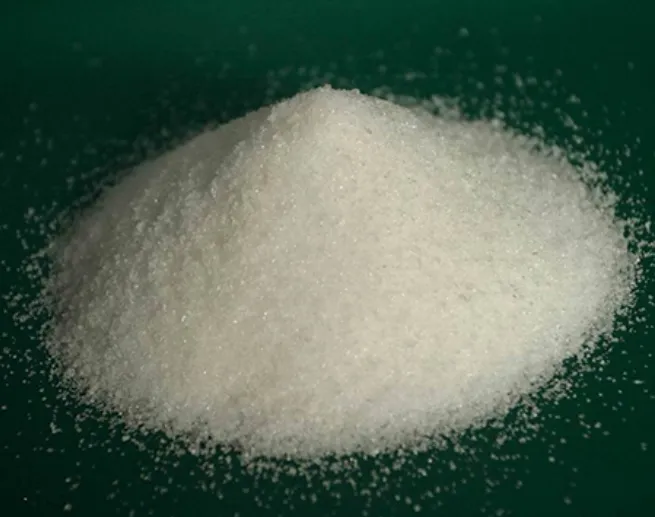anionic polyacrylamide
Anionic Polyacrylamide A Versatile Polymer for Various Applications
Anionic polyacrylamide (APAM) is a synthetic polymer that has gained significant attention across multiple industries due to its unique properties and versatility. As a water-soluble polymer, it is primarily recognized for its excellent flocculation, thickening, and stabilization capabilities. This article explores the production, properties, applications, and environmental considerations related to anionic polyacrylamide.
Production Process
Anionic polyacrylamide is synthesized through the polymerization of acrylamide in the presence of anionic groups. The anionic characteristics are typically introduced by incorporating a certain percentage of anionic monomers, such as acrylic acid or sodium acrylate, into the polymer chain. The resulting polymer structure imparts negative charges, enabling the material to interact effectively with positively charged particles in various environments. The degree of anionic charge can be tailored during production, allowing for specific applications depending on the required performance.
Properties
The unique properties of anionic polyacrylamide make it suitable for a wide range of applications. One of the key characteristics is its ability to absorb water, which leads to enhanced viscosity when dissolved. This property is particularly useful in applications where thickening is needed, such as in cosmetics and food processing. Additionally, APAM exhibits excellent flocculating properties, enabling it to aggregate fine particles and precipitate them from suspensions, thus improving solid-liquid separation processes.
Furthermore, anionic polyacrylamide has a high molecular weight, which allows it to form effective bridges between particles, enhancing sedimentation rates in processes such as wastewater treatment. The polymer's thermal stability and resistance to shear forces also contribute to its effectiveness in various industrial processes.
Applications
anionic polyacrylamide

The applications of anionic polyacrylamide span several industries, including agriculture, mining, paper manufacturing, and wastewater treatment. In agriculture, APAM is used as a soil conditioner that improves water retention and reduces erosion. Its ability to enhance soil structure leads to increased crop yield and sustainability.
In the mining industry, anionic polyacrylamide serves as a flocculant in mineral processing, aiding in the separation of valuable minerals from ore. Its effectiveness in concentrating slurries results in increased recovery rates and reduced chemical consumption.
The paper industry benefits from the use of APAM as a retention aid, enhancing the formation of paper sheets and reducing fiber losses during production. In wastewater treatment, the polymer is employed to clarify effluents by promoting the settling of suspended solids, thus improving the overall quality of treated water before it is discharged into the environment.
Environmental Considerations
Despite its wide-ranging applications, it is essential to address the environmental considerations associated with anionic polyacrylamide. While APAM is generally regarded as safe for use in various applications, its potential for environmental impact must be evaluated. The degradation products of APAM, if not managed properly, can pose ecological risks, particularly in water systems.
Furthermore, there is a growing interest in developing biodegradable alternatives and sustainable practices surrounding the manufacturing and utilization of synthetic polymers like APAM. Researchers are exploring greener synthesis methods and the incorporation of naturally occurring biodegradable materials to mitigate environmental impacts.
Conclusion
Anionic polyacrylamide is a multifunctional polymer that plays a vital role in numerous industrial applications. Its properties as a flocculant, thickener, and soil conditioner make it an indispensable material in fields such as agriculture, mining, and wastewater treatment. As environmental awareness continues to rise, the industry must focus on sustainable practices to ensure that the benefits of anionic polyacrylamide are realized without compromising ecological integrity. Future advancements in polymer technology and environmental management will be crucial in maximizing the potential of APAM while minimizing its environmental footprint.
-
Pbtc Scale InhibitorPBTC: A Scale Protector for Industrial Water TreatmentNewsAug.05,2025
-
Organic Phosphonate: An Efficient Defender in the Field of Scale InhibitionNewsAug.05,2025
-
Hydrolyzed Polymaleic Anhydride: Green Pioneer in Scale Inhibition FieldNewsAug.05,2025
-
PAPEMP Polyamino Polyether Methylene Phosphonic Acid For SaleNewsAug.05,2025
-
Flocculant Water Treatment: A Pioneer in Purification in the Field of Water TreatmentNewsAug.05,2025
-
Benzyl Isothiazolinone: An Efficient and Broad-Spectrum Antibacterial Protective GuardNewsAug.05,2025





